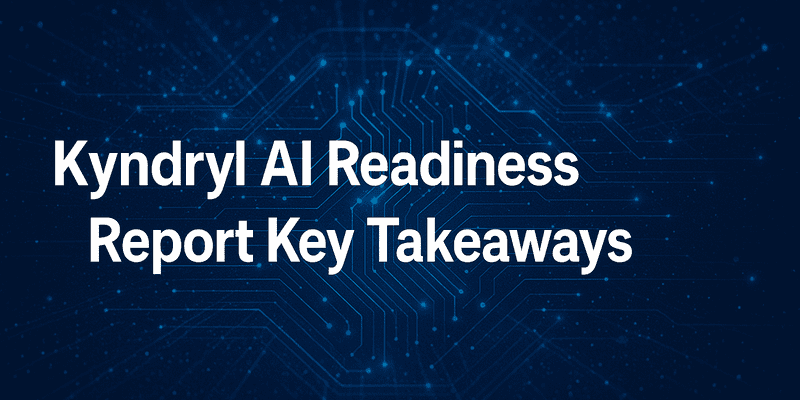AI Readiness Report Kyndryl 2025: Key Takeaways by the Editor

Executive Editor Tim King offers key takeaways from the Kyndryl AI Readiness Report 2025, part of Solutions Review’s coverage on the human impact of AI.
The Kyndryl AI Readiness Report 2025 provides a comprehensive look at the state of artificial intelligence adoption across more than 1,000 senior executives in 25 industries and eight global regions. The report reveals that while an overwhelming 95 percent of organizations have invested in AI technologies, only 29 percent of leaders feel their systems are prepared to manage future risks, highlighting a major gap between AI investment and true operational readiness.
On Workforce Preparedness
Workforce preparedness emerges as a major bottleneck: 71 percent of executives report their teams are not ready to leverage AI effectively, and 51 percent cite a lack of skilled talent as a primary challenge. This skills gap is especially acute in sectors like healthcare and telecom, where 81 percent and 78 percent of leaders respectively say their workforces are not AI-ready, compared to 64 percent in more mature sectors like banking and financial services according to analysis done by Tom Smith at Cloud Wars.
Important: AI Won’t Replace You, But Lack of Soft Skills Might – Get Report
Kyndryl AI Readiness Report 2025: Key Takeaways
Despite the confidence expressed by 86 percent of leaders who believe their AI implementations are “best-in-class,” only 42 percent report seeing a positive return on their AI investments, and 36 percent identify ROI as a barrier to further adoption.
The report also highlights a disconnect within C-suites: 45 percent of CEOs perceive employee resistance or hostility toward AI, while 73 percent of CTOs and CIOs report enthusiasm from their teams according to GuruFocus.
Only 14 percent of organizations have successfully aligned their workforce strategies with AI adoption, and these “AI Pacesetters”—comprising just 14 percent of all surveyed companies—are three times more likely to implement effective change management and see measurable business growth.
AI is Driving Internal Efficiency (Mostly)
Most organizations currently use AI to drive internal efficiencies, with only 21 percent deploying AI for customer-facing products and services. Generative AI is the most common deployment, but just 40 percent of leaders use AI insights for decision-making and growth.
The report’s findings echo broader industry trends, with other studies (such as ServiceNow’s AI Maturity Index 2025) similarly reporting a decline in AI maturity and underscoring the importance of workforce alignment and change management according to an Mi3 analysis from earlier this year.
Kyndryl AI Readiness Report Strategic Recommendations
Kyndryl’s strategic recommendations underline the need for real AI governance, cybersecurity education, and the adoption of zero-trust architectures to address emerging threats. Ultimately, the report argues that organizations investing in both technology and people—through upskilling, trust-building, and clear leadership vision—are best positioned to realize AI’s transformative potential.
These insights are particularly relevant for investors and leaders seeking to bridge the gap between AI capability and organizational readiness in a rapidly evolving technological landscape. Though workforce readiness varies greatly by industry: “with banking, financial services and insurance showing the highest levels of preparedness, while healthcare is trailing behind” according to CyprusMail.
CyprusMail also stated in their review: “Although generative AI tools are the most popular use case, only four in ten leaders said they use AI-powered insights to enhance decision-making or unlock growth. Just one-fifth reported that the primary use of AI at their organisation is to develop new products and services.”
Read the full Kyndryl AI Readiness Report 2025.
Note: These insights were informed through web research and generative AI tools. Solutions Review editors use a multi-prompt approach and model overlay to optimize content for relevance and utility.



